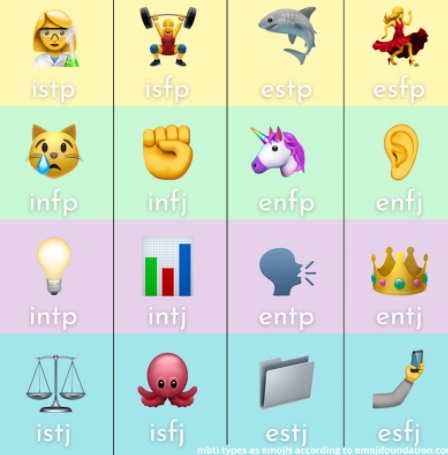In a world of over seven billion people, it can be hard to know where you belong. Every day, we are confronted by seas of people with whom we share countless similarities and differences. In order to navigate this vast universe in a meaningful way, it is important to understand who you are: your values, motivations, fears, and dynamics.
Two popular systems of categorizing people are the Myers Briggs Type Indicator, commonly abbreviated to MBTI, and the Enneagram. Both of these personality indicators offer many online inventory tests that allow individuals to determine their personality types. From there, one can learn about their disposition and find a plethora of information regarding their priorities, worldviews, perceptions, strengths, weaknesses, and interpersonal relationships. Often, this knowledge can aid people in strengthening their connections with others and pursuing self-growth.
Myers Briggs is a well-known personality type system that consists of sixteen different identities. Each type is made up of four dichotomic components: extroversion and introversion, sensing and intuition, thinking and feeling, and judging and perceiving. An individual is assigned a four-letter type that correlates to one trait from each of the pairs, for example, an ENFP type would be partial to extroversion, intuition, feeling, and perceiving. Furthermore, each type is broken down into a stack of their dominant, auxiliary, tertiary, and inferior cognitive functions. The eight cognitive functions can be split into perceiving and judging functions. The former relates to how one interprets information, while the latter describes how one makes decisions. Se, Si, Ne, and Ni?or extroverted sensing, introverted sensing, extroverted intuiting, and introverted intuiting, respectively?are the four perceiving functions, while Te, Fe, Ti, and Fi?extroverted thinking, extroverted feeling, introverted thinking, and introverted feeling, correspondingly?are the four judging functions. The order in which these functions lie for each type reveals the behavior and thought processes of people who identify with them.
Contrastingly, the Enneagram is a system that assigns people to one of nine personality types, in addition to a “wing,” a type of subcategory. The types are numbered and are commonly referred to as The Reformer, The Helper, The Achiever, The Individualist, The Investigator, The Loyalist, The Enthusiast, The Challenger, and The Peacemaker, sequentially. Once an individual’s main type is ascertained, their “wing” is determined by the dominant of the two adjacent numbers. For instance, someone who identifies as Type 2, The Helper, could have a wing of Type 1 or Type 3.
Although a quick Google search will yield a plethora of free online assessments, many people believe that introspection and careful consideration of one’s values is the best method of accurately determining your personality type. For those seeking a quick and easy experience, 16Personalities, Truity, and dozens of other websites offer a plentiful supply of resources. However, exploring the nuances of each of the archetypes may better suit individuals with a desire to uncover more complex aspects of their persona.
Knowing your personality type has numerous benefits. This information can be applied to nearly all aspects of your life: striving for personal improvement, increasing emotional intelligence, understanding how to interact with others, and much more.

